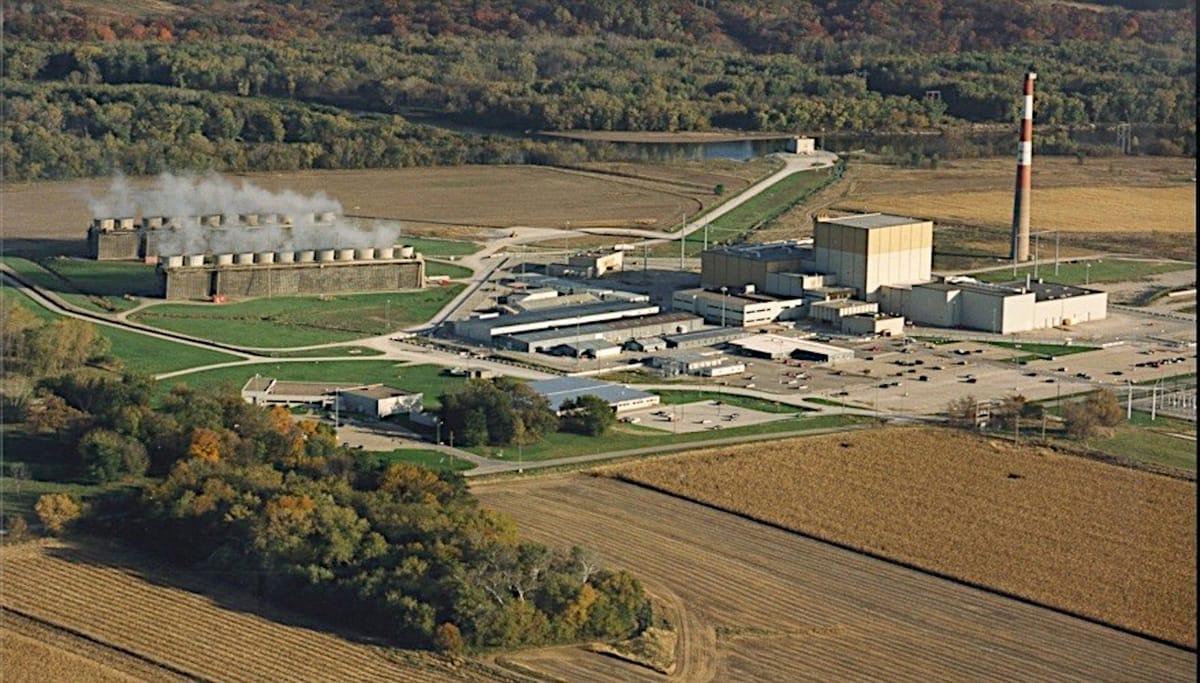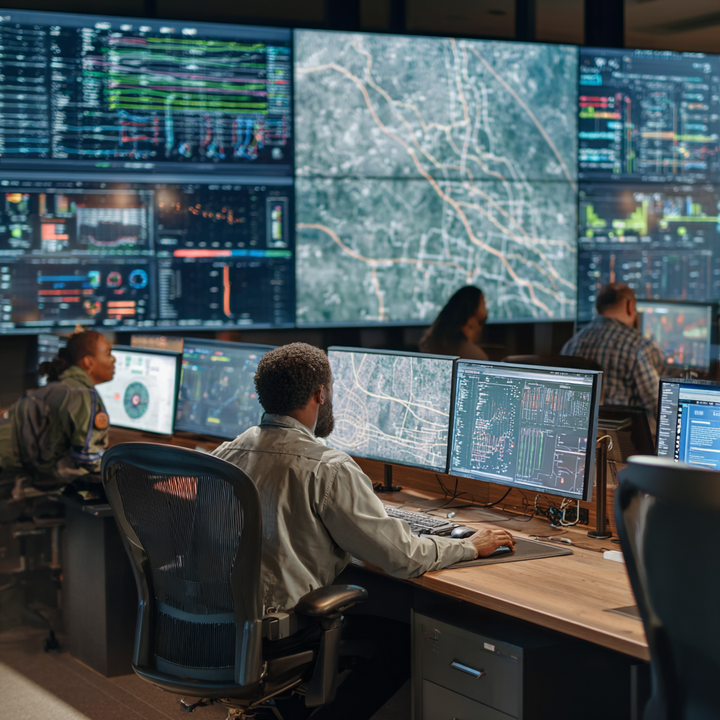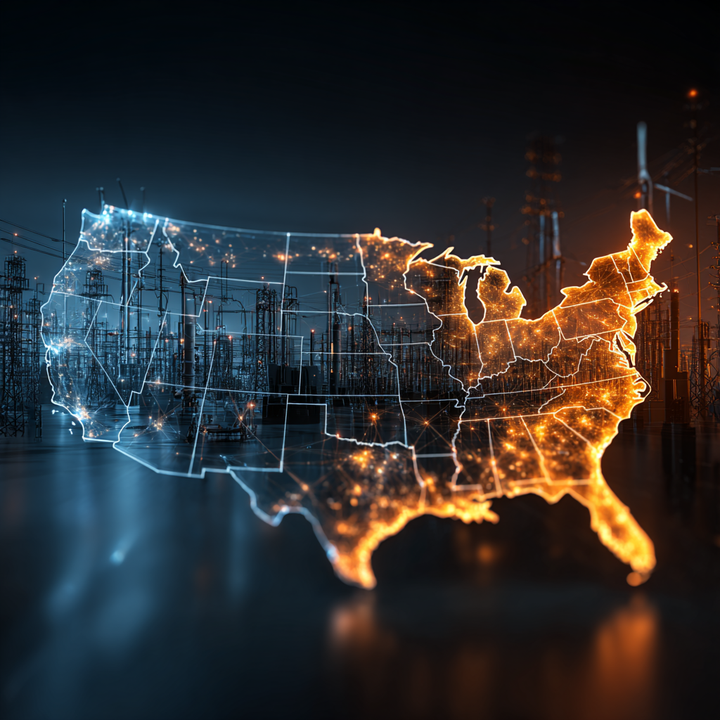Tech giants are turning to nuclear power to fuel AI. Google, Amazon, and Microsoft are backing reactor restarts and next-gen designs—reviving U.S. plants in Iowa and Pennsylvania to secure 24/7 carbon-free energy and anchor America’s digital infrastructure for the AI era.
When the humming stopped at the Duane Arnold Energy Center in 2020, few imagined the quiet Iowa reactor would become a linchpin in America’s digital-infrastructure future. Today, that shuttered plant is central to a sweeping shift: tech giants anchoring long-term nuclear power deals to meet the surging electricity demand of artificial intelligence.
A 615-megawatt restart project led by NextEra Energy and Google LLC is the most recent exemplar of what has quickly become a genre of “nuclear-hyperscaler” deals. On October 27, 2025, the companies disclosed a 25-year power-purchase agreement under which Google will buy the plant’s output once it returns to service—projected for early 2029—while NextEra consolidates ownership from local cooperatives. The move brings Iowa’s only nuclear site back online, with an estimated $9 billion in economic benefits and roughly 400 direct jobs (DataCenterDynamics).
Table 1. Nuclear–Hyperscaler Energy Partnerships Powering the AI Era (2025–2032)
| Project / Plant | State | Corporate Partners | Capacity (MW) | Technology Type | Expected Online Year | Investment (USD billions) | Strategic Impact (1–5) |
|---|---|---|---|---|---|---|---|
| Duane Arnold Energy Center | Iowa (IA) | Google / NextEra Energy | 615 | Pressurized Water Reactor (Restart) | 2029 | 9.0 | 5 |
| Susquehanna Nuclear Plant | Pennsylvania (PA) | Amazon Web Services / Talen Energy | 1 920 | Boiling Water Reactor (Existing) | 2032 | 20.0 | 4 |
| Three Mile Island (Unit 1) | Pennsylvania (PA) | Microsoft / Constellation Energy | 835 | Pressurized Water Reactor (Restart) | 2028 | 1.6 | 4 |
| Hermes 2 Advanced Reactor | Tennessee / Alabama | Google / TVA / Kairos Power | 50 | Molten-Salt Advanced Reactor (Gen IV) | 2030 | 2.5 | 5 |
| Oklo Aurora Microreactor | Idaho (ID) | DataCenterCo / Oklo (Sam Altman-backed) | 20 | Micro Modular Reactor (Fast Reactor) | 2027 | 0.5 | 3 |
Legend: 5 = Transformative (innovative or replicable models); 4 = High Impact (scale + corporate anchors); 3 = Emerging (pilot-stage demonstrations).
The New Industrial Axis
This is more than a clean-energy story. It’s a market realignment where compute demand is rewriting grid physics. Microsoft, Amazon, Google, and others are contracting directly for nuclear-scale generation, not as a climate gesture but as an operational necessity.
Hyperscale data centers run 24/7, with AI-training loads peaking unpredictably. Renewable energy plus storage helps, but it cannot deliver constant power at the multi-gigawatt scale demanded by AI. Nuclear—high-capacity, low-carbon, and contract-friendly—has re-emerged as the only firm resource able to guarantee uninterrupted compute.
TerraPower CEO Chris Levesque told Axios in September 2025 that hyperscalers are willing to “draft 25-year PPAs and pay premiums for the first 20 years of output” to unlock new-nuclear projects while shielding ratepayers. Those economics make restarts like Duane Arnold viable, with private capital filling a role once reserved for federal subsidy.
Where Hype Meets Grid Reality
1. Licensing and Regulatory Velocity
Restarting Duane Arnold is not flipping a switch. Under NRC rules, NextEra must restore the reactor’s full licensing basis, verify structural integrity, and re-qualify safety systems that have sat dormant since 2020. The precedent at Palisades shows that restarts hinge less on engineering and more on regulatory tempo and financing guarantees. Expect the 2029 target to track NRC’s pace, not press-release ambition.
2. Grid Deliverability and Congestion Risk
Iowa’s reactor sits in MISO, where accreditation, queue delays, and congestion charges will shape real-world value. Even with nuclear’s perfect capacity factor, power must be deliverable to Google’s data centers through constrained transmission corridors. Without new 345-kV lines, Duane Arnold’s megawatts risk becoming stranded electrons.
3. Carbon Accounting and 24/7 Claims
Google pioneered hourly carbon-free tracking, but granular matching across nodes remains complex. The credibility of Duane Arnold’s “24/7 carbon-free” claim will depend on whether its generation can be physically and temporally traced to load—not just paper-matched via credits. This is the next frontier in energy transparency.
4. Policy and Tax Credit Uncertainty
The Inflation Reduction Act’s §45U zero-emission nuclear PTC can materially improve project economics—but its applicability to restarts remains ambiguous. Treasury guidance favors existing in-service reactors, not those re-licensed after shutdown. How the IRS rules here could define the restart market nationwide.
5. Supply-Chain and Equipment Constraints
Even if licensing accelerates, the hardware may not. Transformer and switchgear shortages are now a binding constraint. Hitachi Energy recently reported its order book tripled in three years. Without domestic manufacturing expansion, nuclear restarts could stall for lack of grid interconnection gear.
Implications for the AI-Energy Nexus
For Tech Firms – Electricity is now strategy, not overhead. Securing firm, zero-carbon power is the new competitive moat in AI infrastructure.
For Utilities and Developers – Legacy nuclear assets can be re-monetized through compute-linked PPAs. Grid-first contracts—covering transmission upgrades and hourly matching—will separate headlines from deliverables.
For Policy Leaders – Treat data-center demand as critical load in grid planning. Synchronize transmission policy, licensing reform, and DOE lending programs. The Palisades and Duane Arnold timelines will become case studies for bureaucratic agility—or inertia.
For Investors – The risk-return profile of nuclear is shifting from political to contractual. Hyperscaler PPAs create a quasi-sovereign credit floor.
For Communities – The social contract must keep pace. Thermal discharge limits, water rights, and workforce transitions will shape local acceptance as much as carbon metrics.
The Broader Signal
Duane Arnold may be the first proof that “nuclear for compute” is commercially bankable, not hypothetical. But the model’s success depends on execution. Timelines must align with AI load growth, power must flow where compute resides, and communities must see tangible benefits.
If Iowa succeeds, a blueprint emerges: atoms for algorithms—the fusion of America’s industrial past and digital future. The grid that once powered steel mills will now power neural nets.
References
- Gupta, Nainish. “Is nuclear the key to powering the data centre boom?” Utility Dive, Oct 3 2025.
- FTI Consulting. “The Powerful Duo of Nuclear and Data Centers,” Feb 27 2025.
- Levesque, Chris. “Hyperscalers Will Pay a Premium for Power to Deploy New Nuclear,” Axios, Sept 24 2025.
- “Google Signs PPA to Restart Iowa’s 615 MW Duane Arnold Reactor.” DataCenterDynamics, Oct 27 2025.
- “TVA Inks First U.S. Utility PPA for Gen IV Nuclear Power.” Power Magazine, Aug 18 2025.
- “S&P Global Market Intelligence, Hyperscaler Clean Energy Procurement Report,” May 2025.



